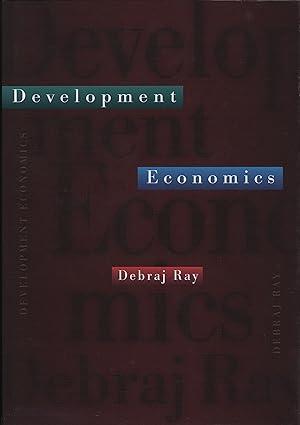The best way to think about the HarrodDomar equations is to attach some numbers to them. First,
Question:
The best way to think about the Harrod–Domar equations is to attach some numbers to them. First, let us work with the simple Harrod–Domar equation (3.5). Imagine that a country has a national savings rate of 20% and that the capital–output ratio is 4. This latter statement means that $4 of capital equipment is used, on average, to produce $1 of output. Finally, suppose that capital lives forever, so that δ = 0.
equation (3.5).

(a) Let’s calculate the rate of growth of overall GDP. The savings rate is 20%, so that applying (3.5), we obtain an annual growth rate of 0.05, which translates into 5% per year. Now figure out (i) what the savings rate should be to get growth rates up to 8 and 10% per year and
(ii) what the capital– output ratio should be (at a savings rate of 20%) to get the growth rates up to the same 8 and 10% per year. Take a good look at these numbers. Why does the savings rate need to rise to raise the growth rate? Why does the capital–output ratio need to fall? What does a fall in the capital–output ratio mean in economic terms?
(b) A growth rate of 5% a year looks pretty good, but not once we start accounting for depreciation and population growth. What happens to the growth rate if the depreciation rate rises to 1% per year and then rises to 2%? Does this make sense? What rate of savings is needed (at a capital–output ratio of 4) to keep a growth rate of 5%, if the depreciation rate is 3%?
(c) Now introduce population growth and turn your attention to the more refined version of the Harrod–Domar equation, given by (3.6). Suppose that the savings rate is 20%, the capital–output ratio is 4, the depreciation rate is 1%, and the rate of growth of population is 2% per year. What is the rate of per capita income growth? Play with different rates of population growth. What rate of population growth would drive the per capita growth rate to zero? Does it make sense that higher rates of population growth, other things being equal, tend to bring down the rate of per capita income growth?
(d) Appreciate the usefulness of an equation that allows you to take a first pass at the relationship between economic variables of crucial importance. No (good) economist would suggest that these relationships are exact, but they do help you form some crude estimates as a policy maker. For instance, if you know the rates of depreciation, the capital–output ratio, and the population growth rates, you can form an estimate of how much savings is needed to push per capita income growth to some given target.
Step by Step Answer:






